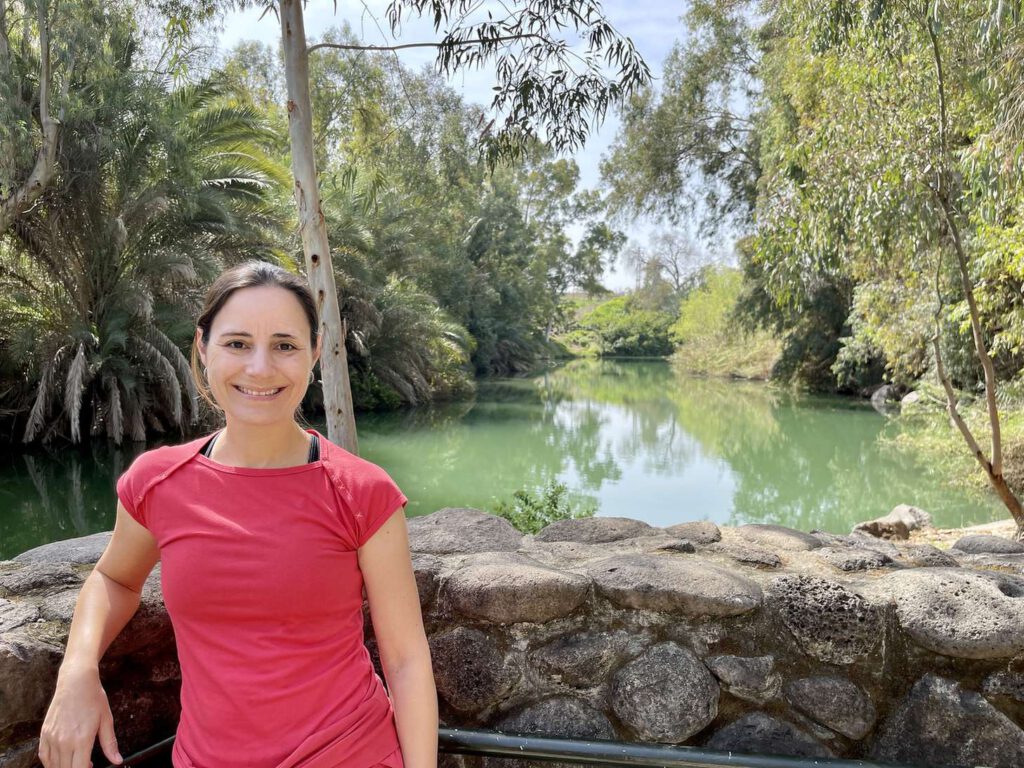
5 reasons why fibromyalgia often does not improve
Author: Kerstin Goldstein
Last updated: 25. July 2025
Many people with fibromyalgia do everything “right” – and yet hardly anything changes. The pain remains, as does the exhaustion. Perhaps you’re asking yourself: Why isn’t my fibromyalgia getting better?
In this article, I’ll show you five common reasons that slow down progress – and what you can do to get moving again on your road to recovery.
1. Your own body is ignored
Over the years, many people have gotten into the habit of ignoring the signals from their body. “Close your eyes and go on” was the motto for a long time. With fibromyalgia, however, this no longer works. The body speaks – sometimes very loudly – and needs someone to listen. You.
But what does that actually mean: listening to your body?
It starts with small moments of mindfulness. For example:
This conscious awareness helps you to differentiate better: What is good for me – and what is not?
You may find that 10 minutes of gentle exercise is good for you, but 30 minutes is completely draining. Or that resting in the afternoon helps you to have less pain in the evening. That’s what it’s all about: not stubbornly following a plan, but orienting yourself to your own rhythm.
A diary can be very helpful here. For a while, I made brief notes every day:
Over time, a pattern emerges – and you learn to trust your body. This trust is an important step on the road to recovery.
If you constantly push yourself beyond your limits, you don’t give your body a chance to regenerate. Conversely, listening to your body doesn’t mean avoiding everything that is strenuous – it means lovingly finding out what is possible without overtaxing yourself.
What does your body want to tell you that you are not listening to?
2. Unresolved issues in the background
Fibromyalgia is much more than “just” muscle pain. It is a complex interplay of the nervous system, hormonal balance, habits, psyche and lifestyle. That is why it is not enough to just work on the surface – for example with painkillers or a change in diet. If nothing improves despite all efforts, it is worth taking a look behind the scenes.
What could be unresolved issues for you?
And not to forget:
I have experienced for myself how strongly the body can react to emotional stress – even when you think “I’m actually fine”. And for many of my clients, things only really changed when they had the courage to tackle such issues.
This doesn’t mean that you have to “solve” everything immediately. But it is helpful to take a look: Is there something that you have suppressed for a long time? Something that keeps working inside you? Or simply physical factors that have not yet been clarified?
A good first step can be to get support – from a therapist, a coach or an experienced doctor who thinks outside the box (e.g. specializes in integrative medicine or naturopathy). Fibromyalgia affects many levels. The more of these you pay attention to, the sooner something can change.
If you are aware that you are carrying around unresolved trauma (of any kind), then I recommend the book “The Body Keeps the Score” by Bessel van der Kolk. It’s not easy to read and some of the examples make you swallow hard, but it’s useful for anyone who wants to take a closer look at their past.
What could be your unresolved “construction sites”?
Mail from the Wellness Oasis
Receive valuable tips, exercises, and inspiration about fibromyalgia directly in your inbox. Sign up now and stay motivated on your journey to more ease and well-being!

3. You’re not ready to make “real” changes
This may sound provocative – but sometimes the right time is simply not (yet) there. Many people with fibromyalgia want to feel better. This is completely understandable. However, there is often a big difference between the desire for change and the actual implementation.
In recent years, I have often experienced that the body is actually ready to stabilize itself – but the inner attitude is not quite there yet. And that’s not a reproach. When you’ve tried so much, been disappointed so often or simply have no more energy, it’s only human to be cautious.
With my clients, I experience time and again that the willingness to make a sustainable change in diet or career has to grow first. And that’s okay. Everything takes time.
But real change requires something crucial: the willingness to take responsibility yourself – in small, feasible steps.
It means, for example:
I deliberately write “willingness” – not “motivation” or “discipline”. Because it’s not about torturing yourself through a program or constantly “motivating” yourself. It’s more about finding an inner yes: Yes, I am open to doing good for myself. Yes, I am ready to step out of the usual cycle – even if I don’t know how long it will take.
And if that inner yes isn’t there yet, that’s okay too. Sometimes it still needs a little time. But if you feel it slowly growing inside you – then that’s a sign that something can change. Then you are ready for my 1:1 Coaching Program. With my coaching clients, I notice immediately when something changes inside. Then we are on the right path to an easier life with fibromyalgia
What are you currently still not ready to do?

My personal approach to dealing with fibromyalgia
I firmly believe that every person affected by fibromyalgia can find ways to cope better with the disease. It’s not about “curing” in the traditional sense, but about understanding your own body better and developing methods that make everyday life easier.
Through targeted coaching and an exercise program tailored to you, you can learn to regain control of your body and live your life with more energy and joy again.
4. Too much at once – instead of a mindful rhythm
When the pain finally subsides a little or you start a new program, the motivation is often huge. Finally doing something, finally getting moving, finally making progress. But this is exactly where a big trap lies: many people throw themselves into it with full energy – and then end up in the next low of exhaustion a short time later.
I hear this again and again with my new clients. After weeks of exhaustion, they have a good day – and want to catch up on everything straight away. Exercise, household chores, social contacts – preferably all at once. But the body very quickly shows: that’s not how it works.
People with fibromyalgia need a different approach to energy. Instead of “faster, further, more”, it is much more helpful to live in a mindful rhythm. This includes
The key lies in pacing – in other words, in a forward-looking, balanced approach to everyday life. Not resting when there is no other option, but regenerating in a targeted manner before the slump comes.
This is difficult at first because we have often learned to pause only when nothing else works. But something changes over time. You become more sensitive to your energy, you plan more consciously – and your body responds with more stability.
Less action – more balance. This is not synonymous with standing still, but with a new, more sustainable pace.

5. Information only from social media
Especially when you have just been diagnosed with fibromyalgia, you are looking for answers. What really helps? What should I rather not do? What has helped others? And of course it’s obvious to start by looking on Google, YouTube, Instagram or in Facebook groups.
The problem with this is that a lot of the information you find there is superficial, generalized or simply wrong. There are many people who share their personal experiences – this can be helpful, but it is no substitute for well-founded sources. And sometimes this information causes more confusion than clarity.
I see it all the time: someone reads that magnesium is the miracle cure for fibromyalgia – so they immediately take a high-dose supplement without consulting their doctor. Or someone believes that you “just have to cut out gluten” and feels hopelessly overwhelmed when it comes to implementing this.
Real change needs more than a few quick tips from the internet. It needs knowledge with substance. That means, for example:
Social media can be a good start – inspiration, exchange, motivation. But for sustainable progress, you need a more stable foundation. I like to compare it to a house: you can get beautiful decorating ideas on Instagram and Pinterest – but without a solid foundation, the house won’t stand for long.
=> I have put together some helpful books and other resources for you, so feel free to check them out.
Where do you get your information about fibromyalgia?
Conclusion: improvement in fibromyalgia is possible
But it doesn’t happen overnight. It takes patience, honesty with yourself and the courage to take responsibility for your own path.
If you feel stuck, it can help to take a closer look: Are you listening to your body? Are there any unresolved issues? Are you ready to keep going – at your own pace?
I would be happy to accompany you.
👉 Don’t feel like struggling through all the small steps on your own? As a Fibro Coach, I will be happy to support you. Let’s talk about whether my Fibro 1:1 Coaching is right for you.